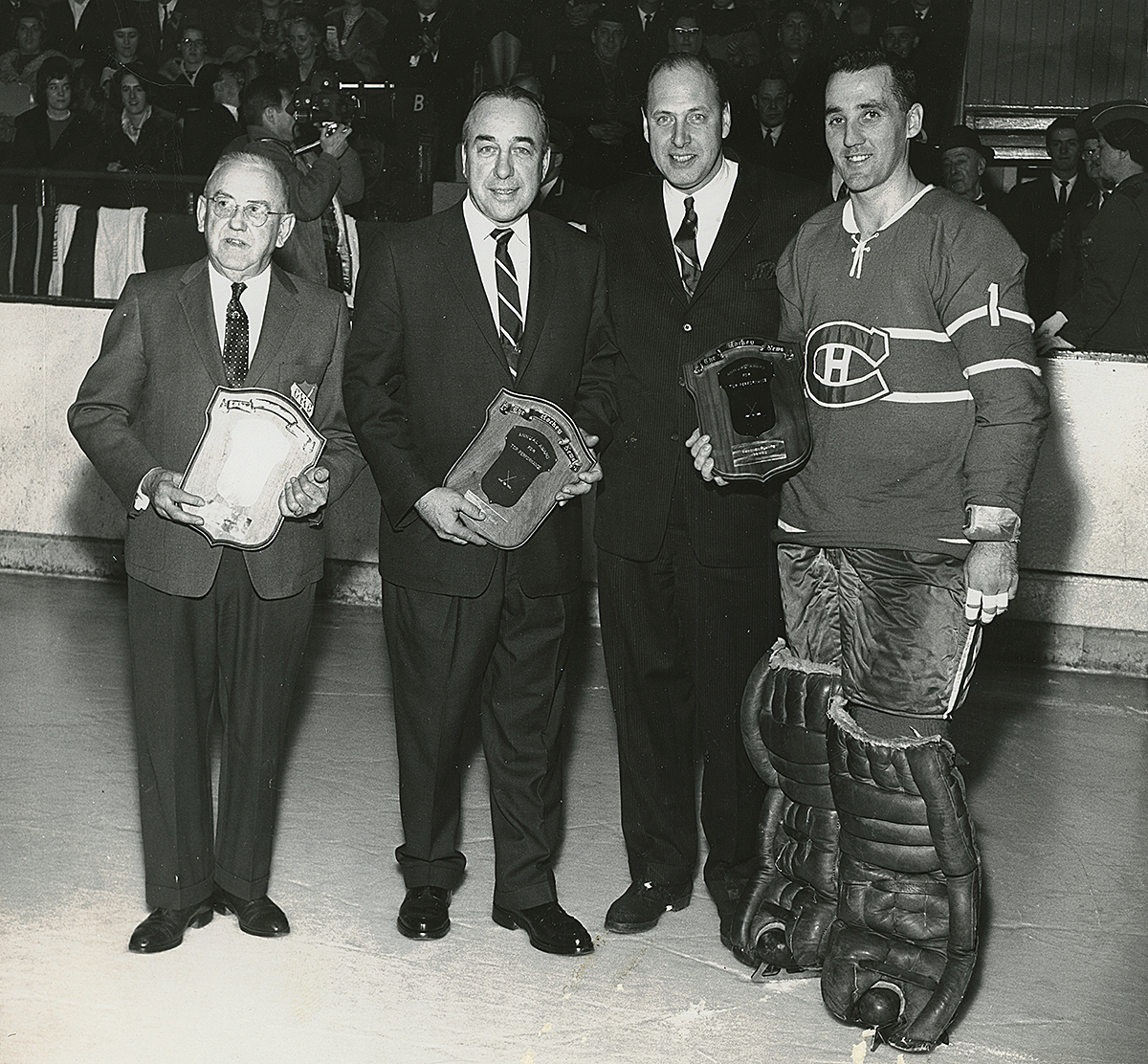
Updated: date
Published: JULY 2025
A son’s loving memory of a hockey media giant
Ken McKenzie: publicist, publisher, and purveyor of good times
By JOHN McKENZIE
Writing from Antibes, France
It was a biting cold Saturday afternoon and the Chicago Black Hawks* were in Montreal to play the Canadiens at the Forum that night. Another chapter in a great rivalry. But that’s not what was on Ken McKenzie’s mind as he sat in his car in front of the Black Hawks downtown hotel. No, the publicity director of the National Hockey League and publisher of The Hockey News was on a mission.
It was 1963 and Ken had worked out a deal with a Montreal haberdasher: If he could convince some big names from the Black Hawks to pose with a new line of hats, each player would get a free Stetson cowboy hat. And so would Ken.
At the appointed hour, as directed, out of the hotel walked Bobby Hull, Stan Mikita, Phil Esposito, and Chiko Maki, all piling into the McKenzie family car and off they went with Ken driving them to the store for photos and free hats.
Later that night when Ken told me what he had done, I was wide-eyed with amazement. “Dad, you had the core of Chicago Black Hawks in our car?” I asked, dumbfounded.
“Yeah,” Ken replied, pausing as he recalled the image. “I drove very carefully.”
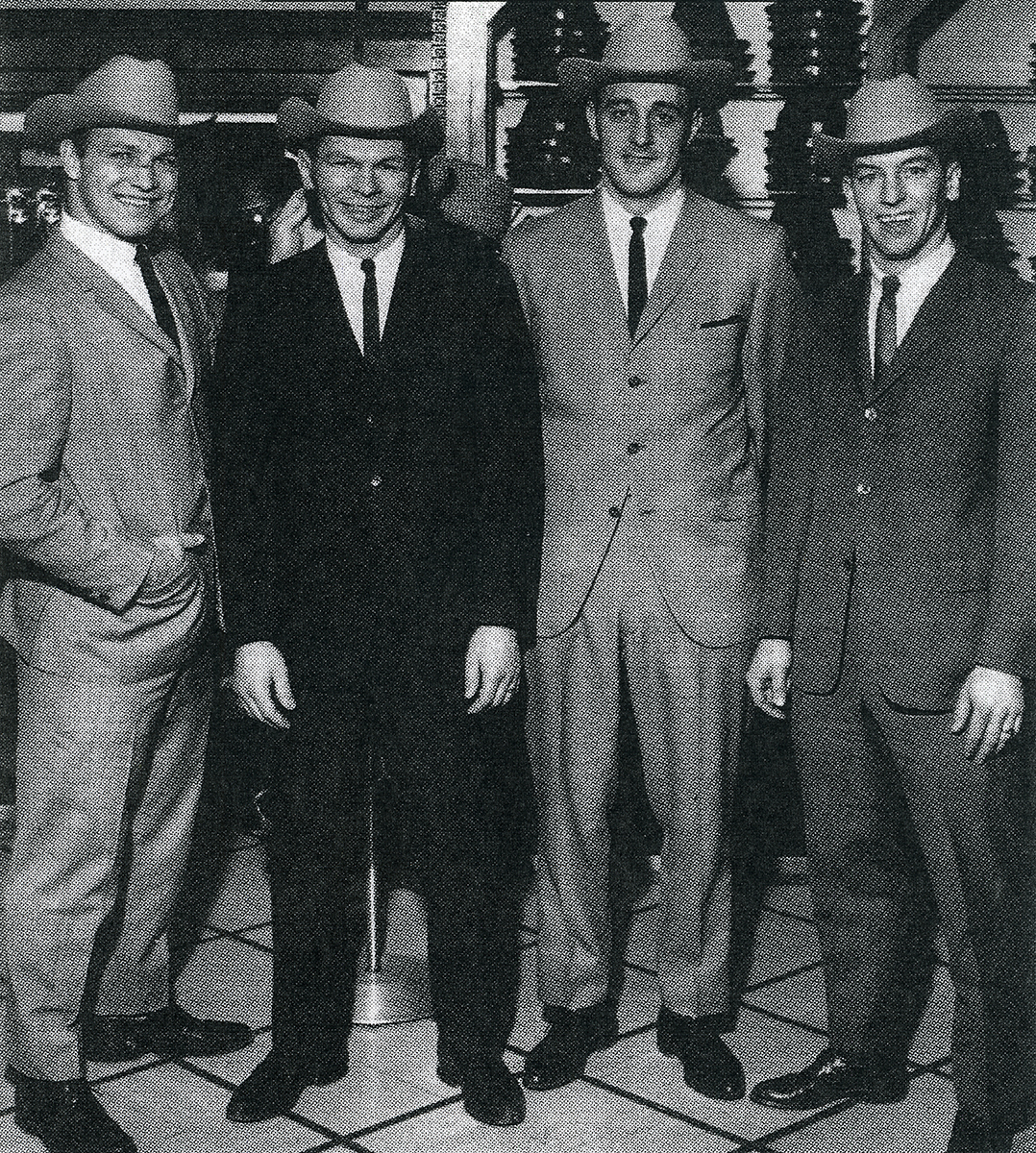
It was classic Ken McKenzie – a poor kid from Winnipeg who saw opportunity at every corner. A true “hustler” in the most positive sense of the word: an enterprising person determined to succeed, a go–getter.
At the age of 13, Ken was the second highest earning salesman for the Saturday Evening Post. He also sold programs and hot dogs at home games of the Winnipeg Blue Bombers of the Canadian Football League. By the time he was 17, he was writing a weekly column on minor league sports for the Winnipeg Free Press. He had pitched the idea to the paper’s editor who promptly informed him there was no budget for it. “No problem,” said Ken. “I’ll do it for free.” He knew those bylines would help him land a real newspaper job in the future.
Sure enough, after the Second World War, Ken moved to Montreal and was hired as a sportswriter for The Gazette. Within months, he approached the new president of the National Hockey League, Clarence Campbell, and suggested that the league needed a full-time publicity director. Campbell gave him the job, and more. For Ken, whose father had died in his early 50s, Campbell became a surrogate parent. “Mr. Campbell probably gave me more good advice than anyone in my life,” he once said.
When some team owners balked at the idea of naming a 23-year-old as a league publicity director, Campbell responded: “If Ken’s youth is his biggest impediment, I’m sure it is one he will overcome with time.”
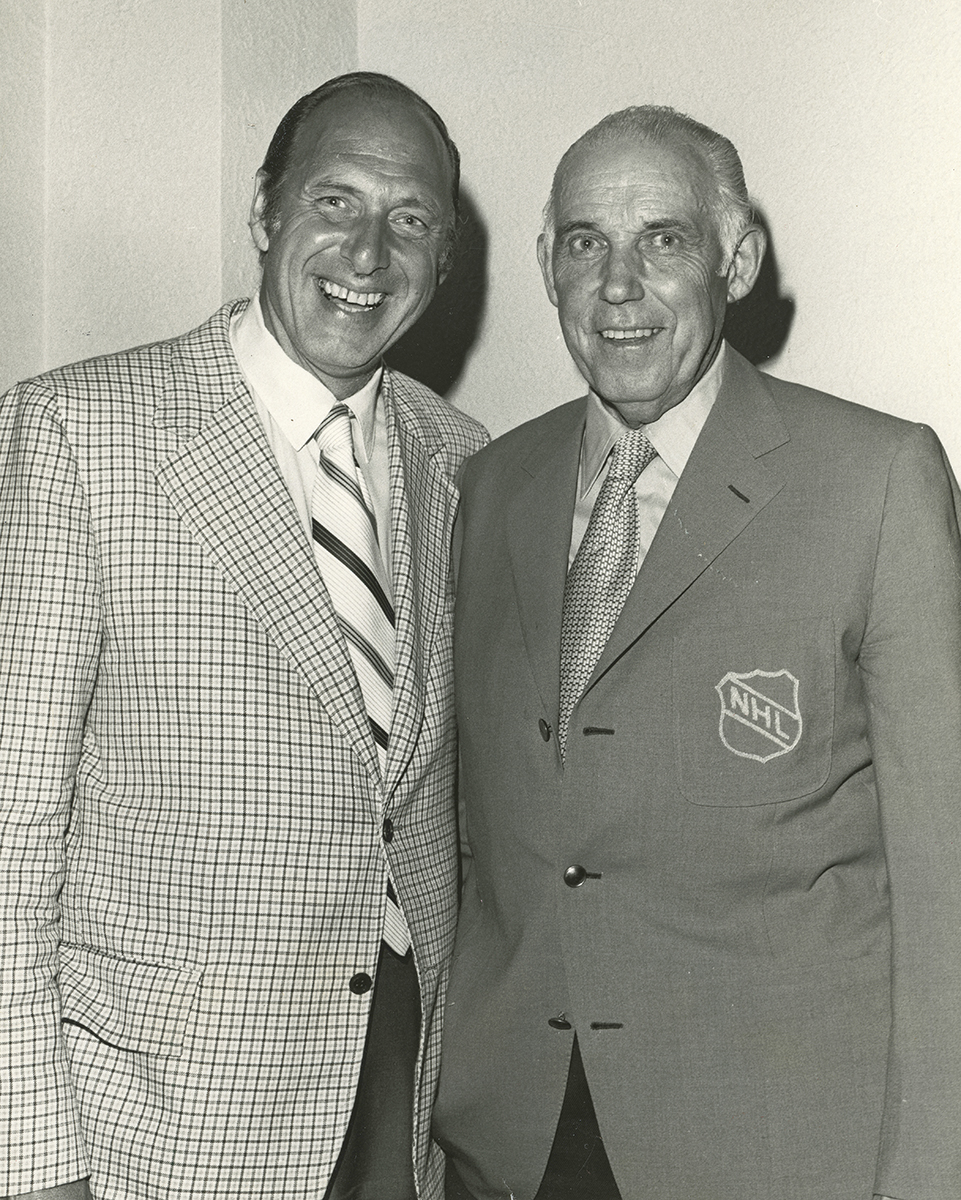
Campbell also supported my father’s dream of starting a newspaper devoted to hockey. It had never been tried, and most people predicted it would fail. They argued that the topic was too limited, the season too short and, most of all, “what could you put in the publication that you can’t get in a daily newspaper? ” But Ken was determined. He and a partner, Will Cote, put down $383.81 for printing and paper costs and in October of 1947, The Hockey News – what would become the bible of hockey – was born.
Full-time job, plus gigs galore
From there, Ken went on to publish Hockey Pictorial, Hockey World, Canadian Football News, Canadian National Skier and to host his own radio and TV shows – all while still working as the full-time NHL publicity director. Ken took moonlighting to new heights. He finally left his NHL gig in 1963. “Just in time,” he said, “because the next year they brought in an efficiency expert.”
To generate publicity for his newspaper, Ken began handing out annual awards like they were hot bagels. There was the Hockey News Player of the Year; Coach of the Year; Executive of the Year. It started with the NHL, quickly expanding to separate honors for each minor league. Ken realized early on that every presentation at centre ice or on national television gave the paper more visibility and spurred subscriptions.
Ken was not only the paper’s publisher, he also sold all the advertising. “It takes nerve, and you have to sell yourself,” he said. “I would much rather go out and make a sale than do an interview. I love selling and I do it well – ever since I was a boy.”
It helped that Ken enjoyed being around people so much. You could sense it the moment he walked into a room. He filled it with his smile, and warmth, and outstretched hand the size of a bear paw. He was exuberant. He laughed easily and everyone he met was “buddy” or “pal”. For his wife and four children, he was the life of any party: the first to arrive and the last to leave – much to the chagrin of my mother.
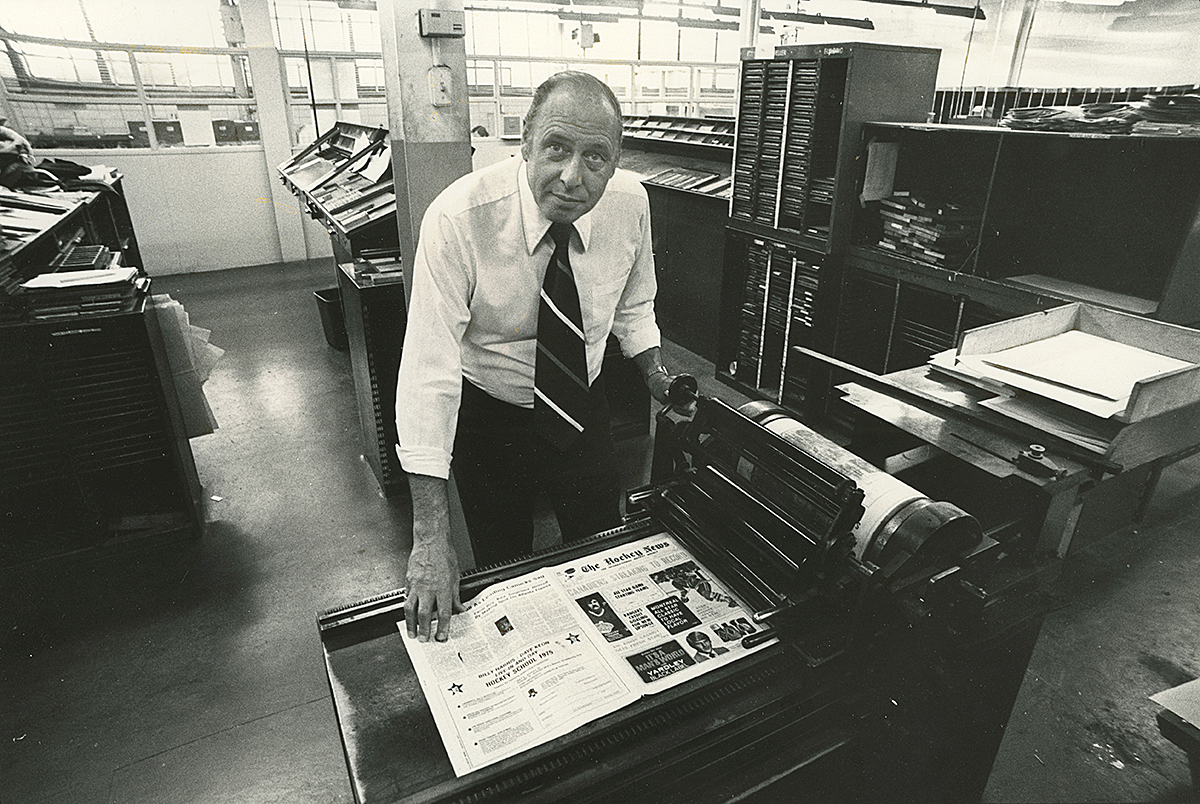
Ken didn’t go to college. “I went to the school of hard knocks,” he would say and was keenly sensitive to how fleeting success can be. He had an insatiable appetite for biographies, especially about prosperous entrepreneurs, but he had plenty of sage advice of his own to impart.
As a boy, I’d often approach my father with details of my latest plan: some sports team I would join or job I would apply for. Each time his response was the same: “Don’t talk about it. Do it. In every bar, in every city in the country, there’s some guy talking about what he’s going to do. Successful people are the ones out there doing it.”
Never gave up on his dream
In 1973, Ken sold majority interest in The Hockey News, but stayed on as publisher. He said his final goodbye to the paper in 1981. He was financially secure, but not complete: more than anything, he wanted to be in the Hockey Hall of Fame. That dream was finally realized in 1997, the 50th anniversary of The Hockey News.
I remember the induction dinner, my father dressed in a tuxedo walking around the ballroom of a large Toronto hotel, happily signing autographs for excited fans who had been reading The Hockey News for decades.
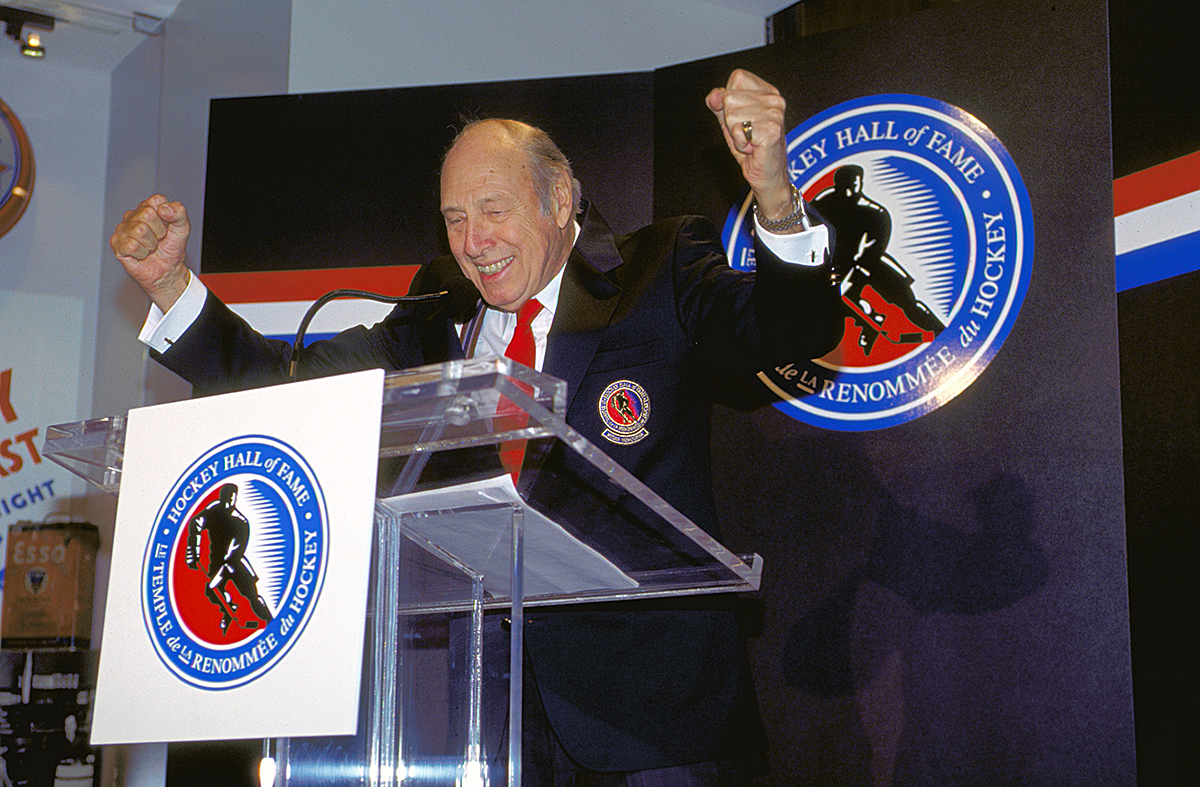
After the dinner, after all the speeches and handshakes, the clock was approaching midnight. Time to leave.
“Let’s take one last walk around the lobby and see if we can meet any more fans,” he said. It was his Cinderella moment, and he wasn’t ready for it to end.Shortly after his passing in 2003, I was going through the mounds of pictures and letters he had collected over the years, and I came across a handwritten note. It was the ending of one of his after-dinner speeches, one of many he gave in banquet halls across Canada, and it so clearly captured his passion for life:
“Now I’d like to pause and speak from my heart,” he had written. “... if I’d listened to the skeptics who said, ‘Ken, you’re a dreamer. You’ll never make it.’ I’m sure my dream would have died.
“If there is only one person out there tonight who has a dream, work for it – live it – believe in it – and damn it, it can happen. And most importantly: Believe in yourself! Listen. I made it, and so can you!”
*Editor’s Note: At that time, Chicago’s NHL team name was spelled as two words, Black Hawks. Since 1986, they have been known as the Blackhawks (one word).
John McKenzie's bioMemoirs of a foreign correspondent